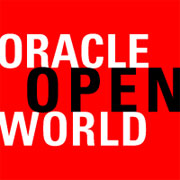
The ghost of Anthony Lye presided over Oracle OpenWorld’s third-day customer experience, or CX, keynote. For CRM and related things, it was the moment I’d been waiting for. Lye is in robust health as far as I know, but he has been gone from Oracle for about a year. He was the architect of Oracle’s CRM strategy that resulted in the acquisitions of RightNow Technologies, ATG, Endeca, and other brands that the company spent billions on and consolidated into its CX operations.
Lye’s fingerprints were all over the keynote script, ably presented by David Vap, who made a kind of case for why social media embedded in CRM has become or is becoming standard equipment for any company aiming to access 21st century marketing and sales.
Vap updated some concepts about customers deserting vendors when vendors can’t meet their needs — 26 percent now post negative comments about vendors, 86 percent stop doing business after one bad experience, and 69 percent of employees are not actively engaged with their jobs.
While Vap’s effort was intended to present a brief for social’s inevitability, I felt it was more of an indictment of business as usual — of simply trying to apply social Band-Aids to what are fundamentally cultural problems in many corporations today. It was like looking through the wrong end of the telescope.
Customers in Charge
The corporate culture is still too mired in a manufacturing age — the build-it, ship-it and collect-the-money model untouched by things like subscriptions and mobile technology — and Oracle’s approach to it all seemed to me to be a social overlay on fundamentally broken business processes. As a strategy it works because it offers sinners salvation without asking them to repent. Unfortunately, they keep sinning.
What was missing, to my way of thinking, was the customer. There was little acknowledgement that amending the corporate culture and the business model starts with asking the customer — not once, but throughout the lifecycle — what do you want and how are we doing? It was alluded to in Vap’s talk, but presumably Oracle doesn’t have an app for that, only a methodology, so it didn’t get the attention it deserved.
A big tell for me was Oracle’s reliance on what I think is one major analyst firm’s infinite loop customer lifecycle. The parts of the lifecycle include Need, Research, Select, Purchase, Receive, Use, Maintain and Recommend, which brings us back to Need. I much prefer the lifecycle promoted by GetSatisfaction and some other social vendors, which uses only six stages: Discovery, Evaluation, Purchase, Use/Experience, Bonding and Advocacy.
The first lifecycle aims to provide vendor side solutions for every step — with the possible exception of Advocacy, which is inherently customer side. It is neatly contained by the vendor and its presumed use of customer experience notions.
The reason I like the alternative better is that it admits that the vendor is not in control and actually puts the customer in the center of the model. It admits that the customer is in control from the beginning, leveraging the information resources of the Internet and social media to conduct a purchase process largely free of vendor influence.
It’s the second half of the lifecycle, the back nine of the relationship, where social shows its stuff in this model. Rather than deliver a product and wish the new owner luck, the second approach continues to leverage social leading up to the most critical part of business today, bonding.
Vendors may mourn the fact that they can’t control customers as they did back when they controlled information flow, but they’ve made too little progress on the back nine in understanding that bonding is not only the new black, but also the new everything.
Without bonding you never get to recommendation, which is a tepid form of advocacy, and without either you spend more than you should attracting and maintaining customers at a time when the costs of those activities eats into margins in a nontrivial way.
Bright Spots
For all that, it seems that Oracle might be doing well enough with its customer experience strategy, at least in Europe. It was interesting that the major use stories came from Tesco, a large retailer and grocer — and everyone’s favorite Lego. The presenter from Lego showed that he really gets it and told several stories about customer engagement, about being in the moment with the customer, and ultimately about customer bonding. Oracle needs more of that.
Had Lye stuck around, I wonder if he would have been able to turn the ship from a culture of layering technology on old business processes to one that embeds a customer culture into the technology. That’s not a fair question, because everyone moves on and what remains ought to be the culture that drives the organization forward.
Oracle has some amazing tools and the ears of very powerful people in IT across the world, so I am not concerned about it getting its social messaging right eventually. It haven’t been at it very long, after all.
There were many bright spots at Oracle OpenWorld — don’t let this rat hole I’ve fallen into give you the wrong impression. Nearly everyone I interact with said it was the best run thing in years, and much credit for my little part of that experience goes to Susie Penner for her tireless efforts to give us access to Oracle executives.
There was also the little matter of the America’s Cup, which I wrote about last time with regard to analytics. I have had a ringside seat to some of the comings and goings behind the scenes over the last couple of years, and I have to say that while many people were miffed that Larry Ellison played hooky from a keynote to root, root, root for the home team, I think he made the right move. OpenWorld happens every year; America’s Cup on your boat and in your backyard — not so much.






















































